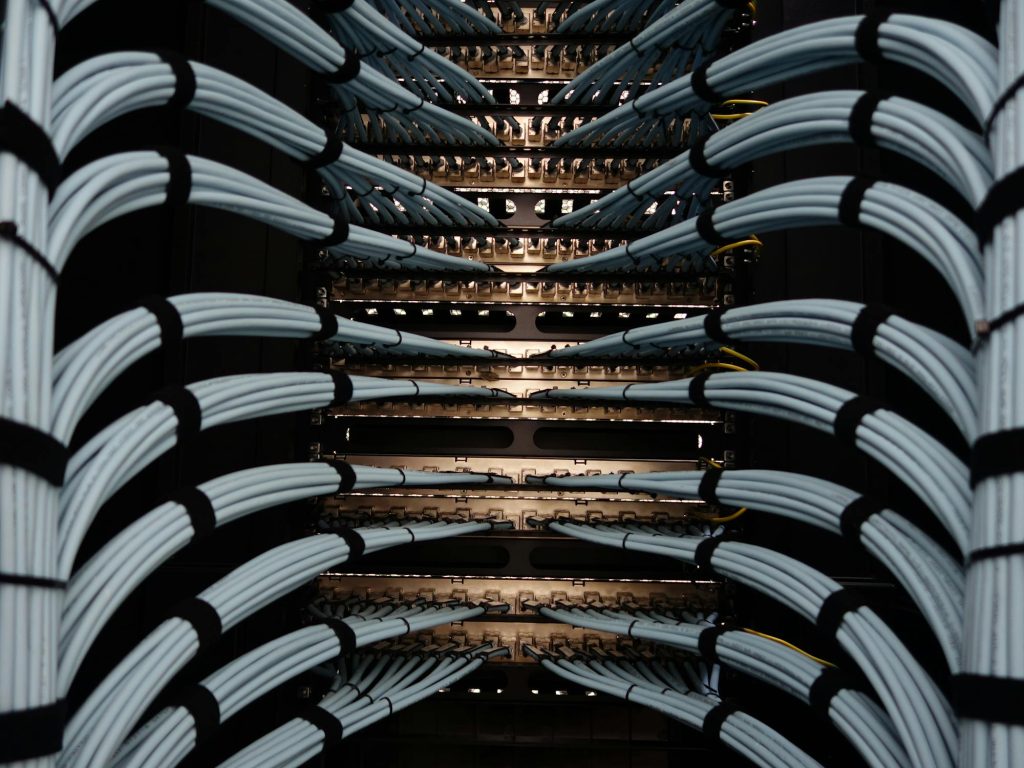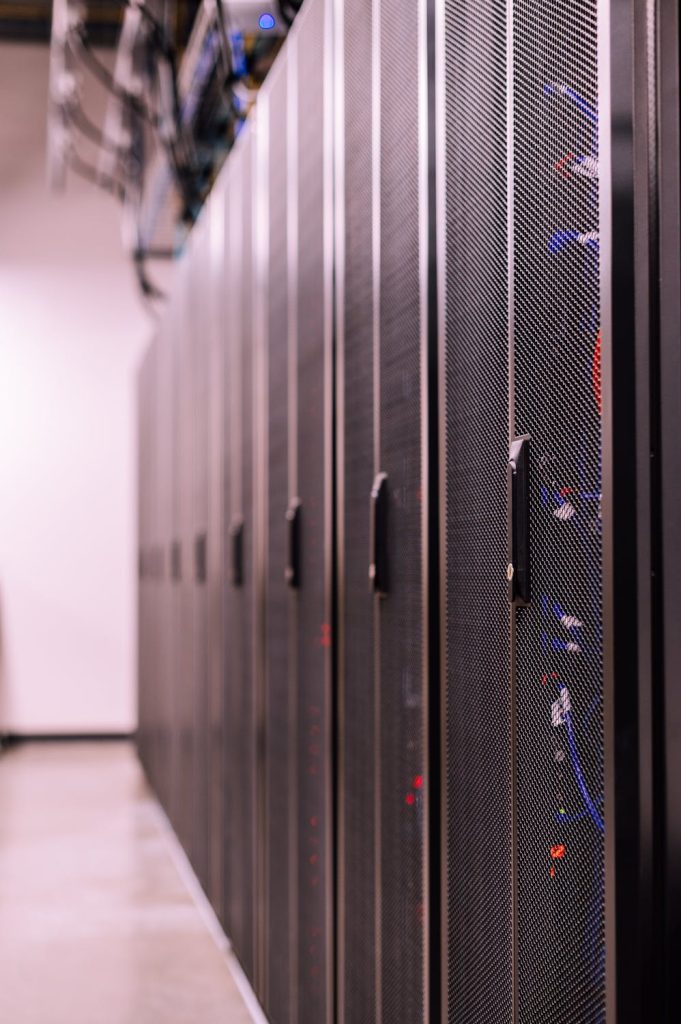Servers: The Backbone of Modern Computing and Business Operations
In today’s digital landscape, servers play a critical role in powering everything from websites and applications to complex business operations. Whether it’s hosting a website, running a database, or managing cloud services, servers are the backbone of technology infrastructures worldwide. This guide will explore what servers are, their types, essential features, setup considerations, and top brands in the market.
What is a Server?
A server is a computer or software that provides services, data, or resources to other computers, known as clients, over a network. Unlike a typical personal computer, servers are designed to handle intensive tasks, run continuously, and manage multiple requests simultaneously. They perform various tasks, from hosting websites and managing files to running databases and applications, making them essential for both small businesses and large enterprises.
Functions of Servers
Servers serve various functions across different fields. Here are a few key roles servers play:
- File and Data Storage: Servers store data, files, and documents, allowing multiple users to access and share information efficiently.
- Hosting Websites and Applications: Web servers host websites and applications, providing internet users with access to web content.
- Database Management: Database servers store and manage data used by applications, enabling quick access, retrieval, and updates.
- Email Management: Email servers store and deliver emails to users, managing all incoming and outgoing messages.
- Virtualization and Cloud Computing: Virtualization servers enable the creation of virtual machines, while cloud servers offer scalable resources over the internet.
- Security and Authentication: Servers can handle network security and authenticate users, ensuring that only authorized individuals can access specific resources.
- Backup and Disaster Recovery: Backup servers store copies of essential data and help restore it in case of hardware failure or other data loss events.
Types of Servers
Servers come in various forms, each designed for specific tasks and optimized for different workloads. Here’s an overview of the most common types:
- Web Servers
Web servers host websites and handle requests for web pages, images, and other media. They are essential for businesses with an online presence. Popular software includes Apache, NGINX, and Microsoft IIS. - File Servers
File servers store and manage files, enabling shared access across a network. They’re widely used in business environments to allow teams to share documents and media files. Examples include Windows Server and Synology NAS. - Database Servers
Database servers store and manage large volumes of structured data used by applications. They support relational databases like MySQL, PostgreSQL, and Microsoft SQL Server. - Mail Servers
Mail servers manage email sending, receiving, and storage. Businesses often use mail servers to manage corporate email accounts. Examples include Microsoft Exchange and Postfix. - Application Servers
Application servers host and run applications, handling tasks and business logic. They are frequently used in web-based applications and enterprise environments. Examples include IBM WebSphere and Apache Tomcat. - Virtualization Servers
Virtualization servers allow multiple virtual machines to run on a single physical machine, increasing resource utilization and enabling flexible IT environments. VMware ESXi and Microsoft Hyper-V are popular platforms. - Cloud Servers
Cloud servers provide scalable resources over the internet. They’re typically hosted in data centers and are accessible from anywhere. Amazon Web Services (AWS), Google Cloud Platform (GCP), and Microsoft Azure are leading providers. - Proxy Servers
Proxy servers act as intermediaries between client devices and other servers. They’re commonly used for security, content filtering, and performance optimization. - DNS Servers
DNS (Domain Name System) servers translate domain names (like www.example.com) into IP addresses, making them essential for internet navigation. - Gaming Servers
Gaming servers host online multiplayer games, allowing players to interact and compete. These servers need low-latency connections and powerful hardware to handle real-time interactions.
Key Features to Consider in Servers
When selecting or setting up a server, there are several critical features to keep in mind:
- Processing Power (CPU)
The server’s CPU determines how quickly it can handle tasks. High-performance servers use multi-core processors from Intel Xeon, AMD EPYC, or ARM-based chips for demanding applications like AI, machine learning, and databases. - Memory (RAM)
RAM is essential for running applications smoothly. The more RAM a server has, the better it can manage multiple requests and run virtual machines or database applications. Servers commonly use ECC (Error-Correcting Code) memory to ensure data reliability. - Storage Type and Capacity
Storage plays a crucial role in server performance. Modern servers often use SSDs (Solid State Drives) for faster data access and reduced latency, while HDDs (Hard Disk Drives) are preferred for higher storage capacity. NVMe SSDs are the fastest storage option for high-demand applications. - Network Connectivity
Servers require robust network connections to ensure quick data transmission. Gigabit Ethernet is standard, while 10 Gigabit and 40 Gigabit connections are used for high-demand environments like data centers. - Scalability
Consider how easily the server can scale to meet future needs. Blade servers and modular servers are designed to add more processors, memory, and storage as required. - Redundancy and Reliability
Enterprise servers often include redundant power supplies, cooling systems, and storage options to prevent data loss and downtime. RAID (Redundant Array of Independent Disks) configurations are commonly used to enhance data reliability. - Operating System
Servers run specialized operating systems like Windows Server, Linux (Red Hat, CentOS, Ubuntu Server), and Unix-based systems that provide stability, security, and compatibility with server applications. - Security Features
Security is a priority for any server, with features like hardware encryption, firewalls, and intrusion detection to protect sensitive data. - Remote Management
Remote management tools like iLO (Integrated Lights-Out) from HPE, Dell iDRAC, or Cisco UCS Manager allow administrators to monitor, configure, and troubleshoot servers from anywhere.
Types of Server Configurations
There are different ways to configure servers depending on the environment and use case:
- Rack Servers
Rack servers are mounted in standard-sized racks and are widely used in data centers. They are space-efficient and allow for easy scalability. Popular options include HPE ProLiant and Dell PowerEdge rack servers. - Tower Servers
Tower servers are standalone units, similar to desktop computers, often used by small businesses. They are affordable and require minimal setup. HPE and Lenovo offer reliable tower servers. - Blade Servers
Blade servers are slim, modular devices that fit into a chassis with shared power, cooling, and network connectivity. They are ideal for high-density data centers. Cisco UCS and IBM BladeCenter are popular blade server solutions. - Mainframe Servers
Mainframes are powerful servers used by large enterprises for critical applications that require high processing power and reliability. IBM is a leading provider of mainframe servers. - Hyper-Converged Infrastructure (HCI)
HCI integrates compute, storage, and networking into a single system, often used in cloud and virtualized environments. Nutanix and VMware are prominent HCI providers.
Popular Server Brands
Numerous brands manufacture high-quality servers, catering to a range of needs from small businesses to enterprise data centers. Here are some of the top brands:
- Dell EMC
Dell EMC offers a wide range of servers, including the popular PowerEdge series, known for its scalability, performance, and advanced management features. Dell servers are widely used across industries for various applications. - Hewlett Packard Enterprise (HPE)
HPE’s ProLiant servers are renowned for reliability and flexibility, serving small businesses to large enterprises. HPE also offers blade and hyper-converged infrastructure solutions. - IBM
IBM provides enterprise-grade servers, including mainframes and high-performance computing (HPC) systems. The IBM Power Systems series is popular in data-intensive industries. - Cisco
Cisco offers the UCS (Unified Computing System) series, known for efficient power usage, high performance, and seamless integration with Cisco networking solutions. - Lenovo
Lenovo’s ThinkSystem servers are affordable, scalable, and secure, making them a preferred choice for SMBs and enterprises alike. Lenovo also focuses on energy efficiency. - Supermicro
Supermicro specializes in customizable, high-density servers for cloud, AI, and HPC environments. Supermicro servers are known for their flexibility and range of configurations. - Oracle
Oracle offers powerful database servers optimized for Oracle software, including the Exadata series, known for high performance in database management applications. - Huawei
Huawei’s FusionServer series provides cost-effective, scalable options, with a focus on AI and HPC applications. They’re widely used in Asia and gaining popularity globally.
Setting Up a Server
Setting up a server involves several steps to ensure optimal performance, security, and reliability. Here’s a basic guide:
- Select the Server Type: Choose the right type of server based on your business needs. For example, a web server is suitable for hosting websites, while a database server is essential for managing data-intensive applications.
- Install the Operating System: Depending on the server’s purpose, install a compatible OS like Windows Server, Ubuntu Server, or a custom




